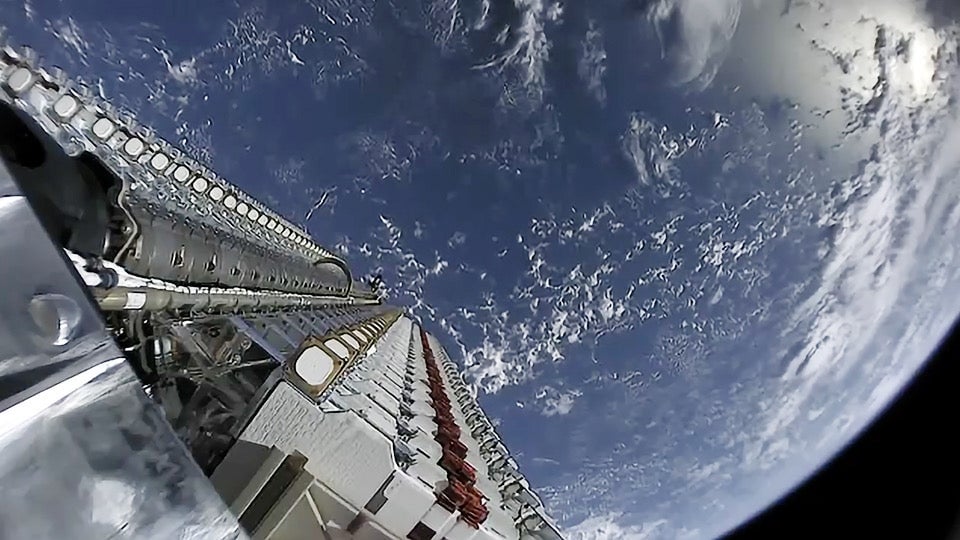What $99 internet from space means for Americans
SpaceX’s novel broadband network in space has begun to demonstrate its chops for military pilots and firefighters. Now individual consumers will get their first crack at testing the service. According to leaks from testers, the price is $99 a month, plus a $499 on-boarding fee, presumably covering the cost of the satellite antennae users will need.


SpaceX’s novel broadband network in space has begun to demonstrate its chops for military pilots and firefighters. Now individual consumers will get their first crack at testing the service. According to leaks from testers, the price is $99 a month, plus a $499 on-boarding fee, presumably covering the cost of the satellite antennae users will need.
Billed as a “better than nothing Beta,” users are warned that their connections may occasionally fail. It’s hard not to see this as a last-minute attempt to fulfill Musk’s promise that service would begin this year. Still, if fulfills its promise of “50Mb/s to 150Mb/s and latency from 20ms to 40ms,” it would provide faster data transfers, albeit at higher latency, than your humble correspondent’s Comcast connection in Oakland, California.
Starlink would also cost more than my internet—but not by very much, since I pay extra for faster service in a world where my wife and I now work from home. Moreover, people who live in denser areas are not the real target for these services—rural internet access is quite a bit more expensive. An existing satellite internet provider, Hughes Net, quoted a price of $139 a month for 25 Mb/s speeds and a 50 gigabyte data cap in rural Washington, one state where SpaceX’s trial is underway.
What this is, then, is a competitive solution for edge cases in the US consumer broadband market. It’s not getting the world’s poor online, but we already knew that: Satellite entrepreneurs market their services to regulators and the public as an access-increasing solution, but for the moment their main customers are militaries, oil rigs, cruise ships, and anyone else willing to pay a premium in a remote location. If SpaceX ever takes Starlink public, it will be fun to see how the revenue breaks out, and we’ll certainly be scrutinizing its application for US subsidies to provide rural internet access.
And yet there is hope that these systems will increase access in the long term, through competition. Consider recent trends in the ways urban Americans pay for data, taking note that these indices include improvements in quality as well as changes in price:
In the last decade, the price of fixed broadband internet has stayed roughly the same, reflecting improving service as well as rising prices—consider that according to the OECD, in 2014, Americans paid about $50 a month for 15 Mb/s speeds; in 2020, they pay about $60 for speeds of 25 Mb/s. (Also worth noting: Americans pay more than any other developed country for their broadband, versus an OECD average of about $37 a month.)
The cost of mobile data has fallen considerably, which also makes sense considering the differences between what you could do with a phone in 2010 and what you can do today. Most noticeably, cable and satellite TV costs have continued to rise—but the product hasn’t changed that much.
Economists suspect the differences come from the amount of competition in these markets. Mobile phone data plans are offered by multiple providers in dense areas, but reliance on expensive physical infrastructure for cable internet and most broadband means that, in 2018, 68 million Americans only had one option for those services. Many, like me, have to choose between just two; in my Oakland zip code, unfettered broadband means either Comcast or AT&T.
As more and more of the information we want converges on the internet, this is going to get more complicated. The FCC has ruled that cable TV providers can raise prices because internet TV services like Hulu count as competition. Meanwhile, it’s not clear that individuals actually need that much more quality from their internet service providers. One thing we have seen: Cable companies have invested more in infrastructure upgrades where they receive competition from pure ISPs.
There are a lot of unanswered questions about Starlink’s capacity and quality—how many customers can it add, at how much density, and where? But if it—and other satellite networks—can compete effectively on quality with terrestrial operators, something not quite possible now, price competition could follow.
A version of this story first appeared in Quartz’s Space Business newsletter.